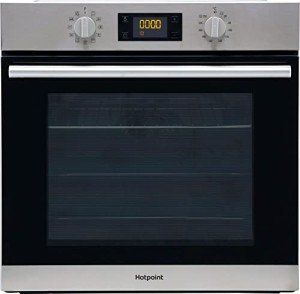Seven Reasons To Explain Why Single Built In Oven Is Important
페이지 정보
작성자 Bradford 댓글 0건 조회 2회 작성일 25-06-21 09:28본문
The Comprehensive Guide to Single Built-In Ovens: Features, Benefits, and FAQs
Introduction
In modern cooking areas, the combination of appliances is essential to accomplishing a streamlined design. Among these appliances, the built-in oven sticks out as a staple for daily cooking. In specific, single built-in ovens are acquiring popularity due to their space-saving design and efficiency. This short article checks out the functions, benefits, and typically asked concerns about single built-in ovens, helping property owners make notified choices.
What is a Single Built-In Oven?
A single built-in oven is a cooking appliance designed to be embedded within kitchen cabinetry, supplying a seamless look that complements the kitchen's aesthetic. Unlike freestanding ovens, built-in variations use a series of functions and styles that deal with modern culinary requirements.
Secret Features of a Single Built-In Oven
Single built-in ovens featured a variety of features that enhance performance and user experience. Here are some of the most crucial characteristics:
| Feature | Description |
|---|---|
| Size and Capacity | Typically varies from 24 to 30 inches in width; suitable for different kitchen sizes. |
| Cooking Modes | Several settings, including convection, baking, broiling, and often steam cooking. |
| Controls | Digital touch controls or standard knobs with precise temperature level settings. |
| Self-Cleaning Options | Many models include self-cleaning functions for easier maintenance. |
| Energy Efficiency | Developed to consume less energy, typically with an A+ energy score. |
| Safety Features | Consists of child locks, cooling systems, and temperature level sensors. |
| Style Options | Readily available in numerous finishes (stainless steel, black, etc) and designs (modern, timeless). |
Advantages of Using a Single Built-In Oven
The adoption of single built-in ovens provides many advantages:
- Aesthetics: They develop a modern-day and sleek appearance in the kitchen, mixing seamlessly with cabinetry.
- Space-Saving: Ideal for smaller sized kitchen areas, they are developed to enhance area by being built into walls or cabinets.
- Increased Functionality: Many designs come with innovative cooking technology such as smart functions that enable remote control through smartphone.
- Easy to Use: With user-friendly controls, built-in ovens are easy to use and ideal for both novice and experienced cooks.
- Improved Cooking Performance: Convection models distribute hot air for even cooking results.
Popular Brands and Models
A number of brands control the single built-in oven market, each offering unique features to cater to customer preferences. Here are some significant ones:
| Brand | Popular Models | Secret Features |
|---|---|---|
| Bosch | HBN8451UC, HBL8453UC | European design, convection heat, Wi-Fi connection. |
| Electrolux | E30SO75GPS, E30SO75PPS | Variations in size, advanced barbecuing capabilities. |
| Samsung | NV51K6650SG | Double convection, smart technology, flexible cooking modes. |
| Whirlpool | WOS51EC0HS | Affordable, trusted, self-cleaning features. |
| LG | LWS3063ST | Smart technology, air fry mode, smooth aesthetics. |
Installation Considerations
Setting up a single built-in oven includes particular considerations:
- Measurement: Ensure that the area allotted works with the oven's dimensions.
- Ventilation: Adequate airflow should be maintained for security and performance.
- Electrical Needs: Check voltage requirements and make sure correct electric outlets are readily available.
- Professional Installation: While some homeowners may pick DIY, hiring a professional can alleviate installation concerns.
Frequently Asked Questions (FAQs)
How much area is needed for a built-in oven?
- A built-in oven usually needs a designated space that differs by design, normally from 24 to 30 inches in width. Always refer to the manufacturer's requirements for precise dimensions.
Can I set up a built-in oven by myself?
- While some may try a DIY installation, it is typically recommended to hire a professional to ensure correct fitting, electrical connections, and ventilation.
Are single built-in ovens more expensive than freestanding models?
- Usually, yes. Single built-in ovens tend to cost more due to their design, installation, and extra features.
What are the distinctions between convection and regular ovens?
- Convection ovens have a fan that circulates hot air throughout, leading to even cooking. Standard ovens rely on glowing heat, which may result in locations and uneven cooking.
What upkeep is required for a built-in oven?
- Regular cleaning, making sure vents stay unblocked, and keeping track of functions. Numerous models use self-cleaning choices, which streamline upkeep.
Single built-in ovens represent a convergence of style, benefit, and performance in contemporary kitchens. With a huge selection of functions and designs offered, these ovens accommodate numerous cooking needs and preferences. Whether you are a hopeful chef or a periodic home cook, buying a well-suited single built-in oven can enhance your cooking experience while raising your kitchen's aesthetic. Cautious factor to consider of functions, installation requirements, and maintenance will cause a rewarding financial investment in this important kitchen device.

개의 댓글이 있습니다.
등록된 댓글이 없습니다.










